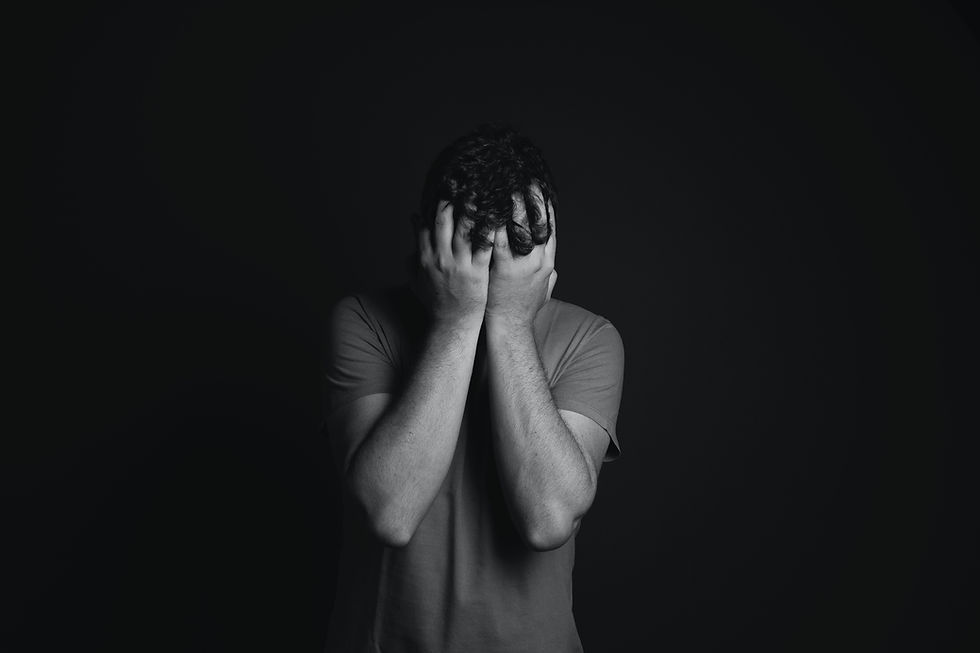Self-Expression, Depression & Masculinity: How Fashion Can Help Men Cope & Assert Their Id
- Lewis Sayers

- Oct 29, 2020
- 3 min read
Updated: Aug 19, 2021
Suicide is one of the largest killers of men in the world. With 16.9 deaths per 100,000 men in the UK alone, it’s an issue that is highly sensitive, complex, and worryingly common. Mental health awareness continues to grow, and while we cannot determine all the reasons behind male suicide, self-expression and an outdated concept of masculinity are two issues often interrogated.
Fashion can help combat these outdated notions and the issue of self-expression within men to enable a higher sense of self-worth and exploration of what masculinity really is.
The struggle with masculine tropes
There’s common phrases: ‘Grow some balls,’ ‘Who wears the pants?’ ‘Boys don’t cry,’ and ‘Be a man.’ Derogatory one-liners that scrutinise one’s masculinity, stifling the way we interact with it. Comments that promote bravado, aggression, misogyny, and a disdain for the feminine.
This restrictive concept of what masculinity is affects how men interact with themselves, putting them at odds with their ability to do so on their own terms. In many ways, men’s natural inclination toward experimentation has been neutered. After all, it’s wrong to ‘act like a girl,’ and we all know who the colour pink is for.
Personally, I have always been enamoured with heels. Something thought about but not acted upon save the odd drama project or fancy-dress function. Those times I rocked them though I always felt right.
Fashion’s cognitive power
Fashion’s cognitive effects on us are well documented, often linked to the core of self-confidence and self-identity. It’s central to our behaviour. Wearing an item that we feel truly represents us can inspire significant confidence – we’ve all felt that “new-shoes walk” at some point (or the “confidence clop” as I call it when I put on my Cubans). I’m sure more than a few of us are guilty of a “new jeans strut” too.
We’ve also felt the blues of a disappointing wardrobe that destroyed our desire to go out, leaving us slumped on the floor between a multi-coloured mountain of tees and jeans that did little to express us. There’s often behaviour exhibited in those with depression to not care about the way they look. The psychological power of fashion cannot be understated. It’s not perfect however, and there remain many challenges with the ability to self-express.
External pressures and fashion trends
In a global climate where the gender binary is being interrogated and gender-fluidity is in the spotlight, men’s fashion trends toward androgyny in many circles. Despite this, the man-skirt remains ever elusive.
The rigidness of masculinity is not just an internal conflict.
Despite efforts from the fashion industry to provide men with more clothing options there remain external pressures on the average man. Clothing regulations within the workspace have not moved as fast as the fashion industry; straight-legged trousers, sensible shoes, shirt and tie.
Contesting this can feel risky, there’s concerns of unwanted attention or contending with frustration and conflict. Worries not limited to the workplace. Fashion is one method in how we present ourselves to others and there’s the fear we might ostracise ourselves. Man-skirt or not, there are many who would not understand a more feminine approach to fashion.
Even men who enjoy skinny jeans, heeled shoes and cardigans might have their sexuality called into question. If clothing is a conversation, then what we are saying about ourselves can have significant impacts on relationships and work. Not everyone is ready to contend with this.
These issues alone may cause more damage than the ability to express oneself truthfully. After all mental health is a deeply personal and intricate subject and one man’s strength could well be another’s debilitating fear.
Expressing your identity in your own terms
For others, the assertion of identity through clothing cultivates a positive body image and elevates their sense of self-worth. The ability to combat feelings of worthlessness, restraint, and depression can come when we learn to express ourselves honestly and find happiness with how we present.
Through challenging and normalising fashion like this it is also possible to interrogate society’s concept of masculinity and gender norms which could lead to positive change and understanding. A man’s relationship with masculinity will always be tenuous and deeply personal, and there are undeniable struggles – struggles that become easier to navigate and contest when you inhabit your body on your own terms. You might even refer to this as “bravery,” something at the very core of what it is to be “masculine.”
This positivity can manifest itself in multiple ways and enables many to cope with their form of masculinity.
It may not be a solution for everyone, or even the most important method of coping, but for many, it’s one more aide in their struggle with depression and self-love.



Comments